- Photo Safaris
- Alaska Bears & Puffins World's best Alaskan Coastal Brown Bear photo experience. Small group size, idyllic location, deluxe lodging, and Puffins!
- Participant Guestbook & Testimonials Candid Feedback from our participants over the years from our photo safaris, tours and workshops. We don't think there is any better way to evaluate a possible trip or workshop than to find out what others thought.
- Custom Photo Tours, Safaris and Personal Instruction Over the years we've found that many of our clients & friends want to participate in one of our trips but the dates we've scheduled just don't work for them or they'd like a customized trip for their family or friends.
- Myanmar (Burma) Photo Tour Myanmar (Burma) Photo Tour December 2017 -- with Angkor Wat option
- Reviews Go hands-on
- Camera Reviews Hands-on with our favorite cameras
- Lens reviews Lenses tested
- Photo Accessories Reviews Reviews of useful Photo and Camera Accessories of interest to our readers
- Useful Tools & Gadgets Handy tools and gadgets we've found useful or essential in our work and want to share with you.
- What's In My Camera Bag The gear David Cardinal shoots with in the field and recommends, including bags and tools, and why
- Articles About photography
- Getting Started Some photography basics
- Travel photography lesson 1: Learning your camera Top skills you should learn before heading off on a trip
- Choosing a Colorspace Picking the right colorspace is essential for a proper workflow. We walk you through your options.
- Understanding Dynamic Range Understanding Dynamic Range
- Landscape Photography Tips from Yosemite Landscape Photography, It's All About Contrast
- Introduction to Shooting Raw Introduction to Raw Files and Raw Conversion by Dave Ryan
- Using Curves by Mike Russell Using Curves
- Copyright Registration Made Easy Copyright Registration Made Easy
- Guide to Image Resizing A Photographers' Guide to Image Resizing
- CCD Cleaning by Moose Peterson CCD Cleaning by Moose Peterson
- Profiling Your Printer Profiling Your Printer
- White Balance by Moose Peterson White Balance -- Are You RGB Savvy by Moose Peterson
- Photo Tips and Techniques Quick tips and pro tricks and techniques to rapidly improve your photography
- News Photo industry and related news and reviews from around the Internet, including from dpreview and CNET
- Getting Started Some photography basics
- Resources On the web
- My Camera Bag--What I Shoot With and Why The photo gear, travel equipment, clothing, bags and accessories that I shoot with and use and why.
- Datacolor Experts Blog Color gurus, including our own David Cardinal
- Amazon Affiliate Purchases made through this link help support our site and cost you absolutely nothing. Give it a try!
- Forums User to user
- Think Tank Photo Bags Intelligently designed photo bags that I love & rely on!
- Rent Lenses & Cameras Borrowlenses does a great job of providing timely services at a great price.
- Travel Insurance With the high cost of trips and possibility of medical issues abroad trip insurance is a must for peace of mind for overseas trips in particular.
- Moose Peterson's Site There isn't much that Moose doesn't know about nature and wildlife photography. You can't learn from anyone better.
- Journeys Unforgettable Africa Journeys Unforgettable -- Awesome African safari organizers. Let them know we sent you!
- Agoda International discounted hotel booking through Agoda
- Cardinal Photo Products on Zazzle A fun selection of great gift products made from a few of our favorite images.
- David Tobie's Gallery Innovative & creative art from the guy who knows more about color than nearly anyone else
- Galleries Our favorite images
Super-telephoto Zoom shoot out: Nikon 200-500mm f/5.6 versus Sigma 150-600mm Sports
Super-telephoto Zoom shoot out: Nikon 200-500mm f/5.6 versus Sigma 150-600mm Sports
Submitted by David Cardinal on Tue, 11/10/2015 - 07:57
![]()
![]() This has been an amazing year for long-lens shooters. For those who don’t want to break the bank and their backs with the Nikon or Canon 200-400mm models, there are now four exciting new options (three of which are available to both Nikon and Canon shooters):
This has been an amazing year for long-lens shooters. For those who don’t want to break the bank and their backs with the Nikon or Canon 200-400mm models, there are now four exciting new options (three of which are available to both Nikon and Canon shooters):
- Tamron 150-600mm lens (which we reviewed earlier this year) (about $1,070)
- Sigma 150-600mm Sports (about $2,000)
- Sigma 150-600mm Contemporary (about $1,100)
- Nikon 200-500mm f/5.6 (about $1,400)
Before we dig into some of the details, having shot with these lenses, they are all pretty amazing for what they provide at this relatively low price point. They are all head-and-shoulders above the older generation super-telephoto zooms from these companies. However, they are also bigger and heavier than the classic 120-400mm and 150-500mm designs they largely supercede. Which lens is right for you will depend on your specific budget and needs, but I can easily recommend all of them as quality products that provide good value.
Tamron 150-600mm lens (which we reviewed earlier this year) (about $1,070)
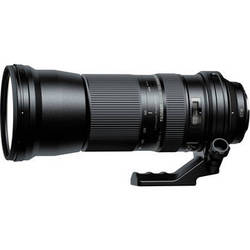 When we reviewed this lens earlier this year it was in a class by itself. At $1070, it was much less expensive than any other lens that could get you to 600mm and create sharp images. Now it has plenty of company, but we’ll stand by our original review that rates it as an excellent choice for wildlife and sports photographers on a budget or who need to travel and want to keep things light.
When we reviewed this lens earlier this year it was in a class by itself. At $1070, it was much less expensive than any other lens that could get you to 600mm and create sharp images. Now it has plenty of company, but we’ll stand by our original review that rates it as an excellent choice for wildlife and sports photographers on a budget or who need to travel and want to keep things light.
Sigma 150-600mm Contemporary (about $1,100)
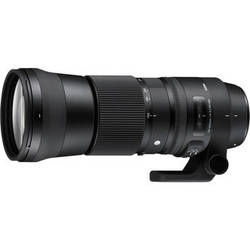 Shortly after Tamron, Sigma released a very similar lens. This is the one of these four lenses I haven’t shot with personally, but based on having watched others shoot with it and having read several reviews, including this excellent one by PC Magazine’s Jim Fisher, who rated it an Editor’s Choice. It’s specs are very similar to the Tamron version, with a variable minimum aperture of f/5.6-f/6.3, and a minimum focusing distance of nearly 3 meters. It weighs in at a comparatively light 4.3 pounds, and can use 95mm front filters.
Shortly after Tamron, Sigma released a very similar lens. This is the one of these four lenses I haven’t shot with personally, but based on having watched others shoot with it and having read several reviews, including this excellent one by PC Magazine’s Jim Fisher, who rated it an Editor’s Choice. It’s specs are very similar to the Tamron version, with a variable minimum aperture of f/5.6-f/6.3, and a minimum focusing distance of nearly 3 meters. It weighs in at a comparatively light 4.3 pounds, and can use 95mm front filters.
Sigma 150-600mm Sports (about $2,000)
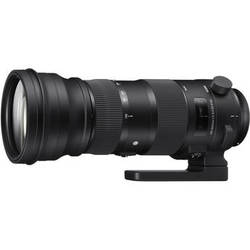 Sigma also unveiled a very substantial version of its 150-600. Part of its professional Sports collection, the lens is twice the price and one-and-a-half times the weight of the Contemporary version. For that you get a much more rugged build, a smoothly-turning lens collar, and slightly sharper images. For comparison, even though this lens is heavier than the others in this shoot out, it is still a pound lighter than the 7.4 pound Nikon 200-400mm AF-S lens. It’s front element is also larger – 105mm – making the use of filters a little more expensive and less convenient.
Sigma also unveiled a very substantial version of its 150-600. Part of its professional Sports collection, the lens is twice the price and one-and-a-half times the weight of the Contemporary version. For that you get a much more rugged build, a smoothly-turning lens collar, and slightly sharper images. For comparison, even though this lens is heavier than the others in this shoot out, it is still a pound lighter than the 7.4 pound Nikon 200-400mm AF-S lens. It’s front element is also larger – 105mm – making the use of filters a little more expensive and less convenient.
This is one very impressive lens. If you are okay with the 6+ pound weight, and have the money, it provides the absolute best image quality you’ll find in a telephoto zoom that reaches 400mm or more and doesn’t cost several times as much. It is also the most rugged of all the lenses we’re looking at in this article, so if you are going to be out in tough weather on a regular basis, or expect your gear to get banged around a bit, this model is a great choice. Rather than a lens cap, it comes with a Nylon cover. You also get a soft carrying case with it. As with other Sigma models, the tripod collar is very close to the base of the lens, making use with a Sidekick awkward. If that bothers you, the Nikon is a better option. As with Sigma’s other Sports and Art lenses, you can customize the lens – including AF behavior, stabilization, and focus limits -- using Sigma’s inexpensive USB dock.
So that vou can get a sense of the sharpness of the lens in real world use, here is a full-frame photo of a Common Raven, followed by my crop:
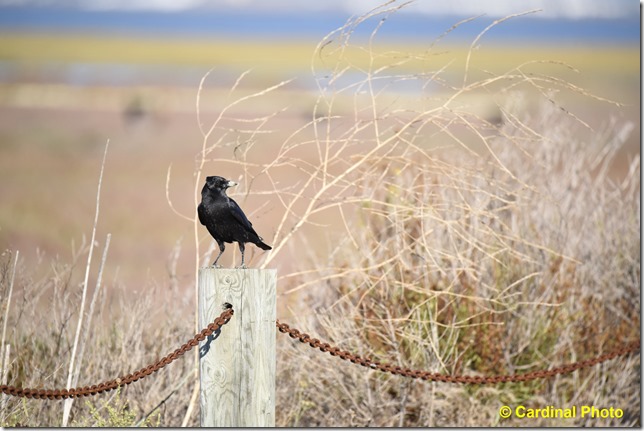
Common Raven, Nikon D810, SIgma 150-600mm Sports lens @ 600mm
1/1500s @ f/6.3, ISO 800
Nikon 200-500mm f/5.6E (about $1,400)
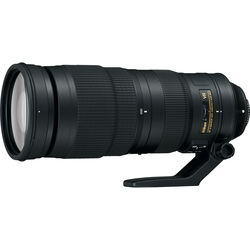 I really like this lens. If I hadn’t known it was an f/5.6 lens, I would have guessed it was f/4. It was that bright and that fast to focus (see below why it shouldn’t be surprising that it focuses as fast as lenses with a larger aperture). It is solid, and easy to use. Nikon has also kept the foot far enough forward that you can use the lens with a side-mounted head like the Wimberly Sidekick without it causing trouble (with the Sigmas I typically need to use my Acratech Long Lens Head, or a full-up Wimberly).
I really like this lens. If I hadn’t known it was an f/5.6 lens, I would have guessed it was f/4. It was that bright and that fast to focus (see below why it shouldn’t be surprising that it focuses as fast as lenses with a larger aperture). It is solid, and easy to use. Nikon has also kept the foot far enough forward that you can use the lens with a side-mounted head like the Wimberly Sidekick without it causing trouble (with the Sigmas I typically need to use my Acratech Long Lens Head, or a full-up Wimberly).
This full-frame-capable (FX) lens has the controls you’d expect, including focus range, M/A or Manual, focus range limiter switch, and both Normal and Active stabilization modes. Unlike the Nikon 200-400mm f/4 lens it doesn’t support drop-in filters, but it is compatible with 95mm screw in filters. Like the Sigma and Tamron (and unlike the 200-400) it is not an Internal Focus lens, so it does get longer as you zoom. However, it can be locked at 200mm to help prevent “lens creep.” As an AF-S lens, it features a Nikon Silent Wave focusing motor, which helps it focus remarkably quickly for a telephoto zoom lens in this price range. At 4.6 pounds, it is no lightweight, but certainly a lot nicer to carry than a 500mm f/4 prime, or the much-more-expensive Nikon 200-400mm f/4 lens. It is also lighter and less expensive than my personal favorite safari lens, the Sigma 120-300mm f/2.8 lens – although not as fast or as sharp.
 Dogwalkers at Palo Alto Baylands
Dogwalkers at Palo Alto Baylands
Nikon D810, Nikon 200-500mm f/5.6, 1/1000s @ f/11, ISO 800
To give you a sense of what you can do with this lens, here is a similar full-frame and then cropped version of a Ruddy Duck.
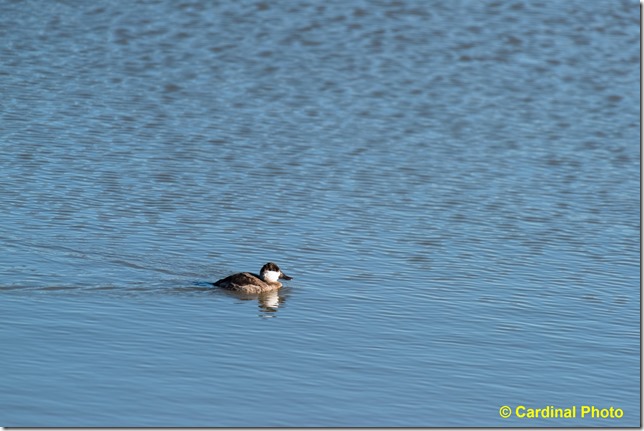
Ruddy Duck, Nikon D810, Nikon 200-500mm f/5.6 lens @ 500mm
1/3000s @ f/5.6, ISO 800
For those demanding the very best optical quality, the Nikon came out a tiny bit short of the more-expensive Sigma if you pixel peep into their images. Here for example is a comparison of the same scene shot at 500mm with both lenses mounted on a Nikon D810. If you look closely you can see that the Sigma image (on the right) has slightly more definition:
 Here is the original image, from which the below crops were taken
Here is the original image, from which the below crops were taken
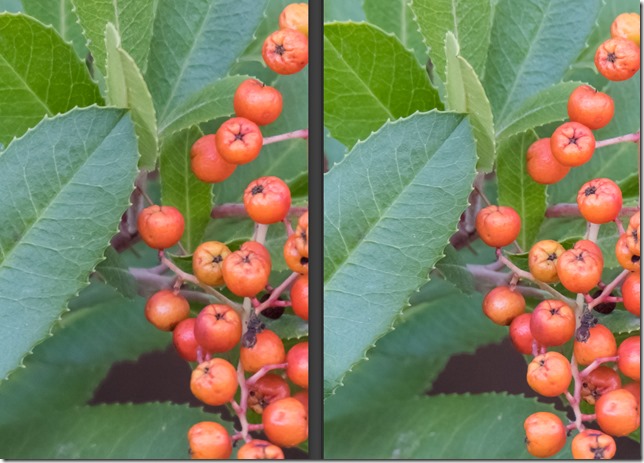
Nikon 200-500mm Lens on the left Sigma 150-600mm Sports on the right
Shooting with these lenses
All of these lenses can be hand-held, but the Sigma Sport version is noticeably heavier than any of the others. In fact, if you don’t need its super-solid build, and slightly improved image quality over the Contssssxxxemporary version, you’re probably better off getting the Sigma 150-600mm Contemporary for half the price. The Sport version’s massively thick lens hood along adds around a half-pound to the lens, and the substantial tripod collar is not removable.
Tripod collars are also always an issue for shooting with lenses of this weight. There is no perfect design for one, and none of these lenses use the high-end removable-foot design found on some other, pricier, models. Sigma’s Sport version maximizes ease-of-handling on a tripod with a nice, integrated, collar, but it adds quite a bit of weight for anyone using the lens hand held. Nikon has gone the other direction, with a removable lens collar that relies on slight detents in the collar. That system always causes some glitchiness when rotating the lens in the collar, but Nikon has done a good job of minimizing it.
Time to make friends with your local camera store?
If nothing jumps out at you from the obvious specs of these lenses (weight, size, and cost, for example) the best way to decide between them might be to take your favorite camera body to a store that carries them and try them out a little, to see which one fits your style. Clearly you could also rent 2 or 3 of them, but that will drive up your cost, of course. Some of the differences include the glitchier removable lens collar (compared to the inflexibility of having a fixed collar), focusing direction, location of controls, etc. For example, aside from the slight hiccups caused by the detents for the lens collar, I found the Nikon f/5.6 the most fun to use. It was a nice size, shape, and weight, and (of course) worked like my other Nikon lenses. By contrast, I felt the Sigma Sport version was built like a tank, so if was going to be doing a lot of heavy-duty shooting in rugged environments, I wouldn’t hesitate to choose it.
Both the less expensive Tamron and Sigma versions didn’t have quite the same fit and finish as the more expensive models, but for the lower price, smaller size, and lighter weight they are both excellent values.
f/5.6 may be just fine: Busting the myth of why faster glass focuses faster
It is conventional wisdom that an f/2.8 lens focuses faster than an f/4 lens, and an f/4 lens than an f/5.6 lens because the camera has more light to work with. As a result, many serious photographers dismiss f/5.6 or f/5.6 to f/6.3 lenses out of hand. However, I have read several very technical papers that explain that this is not true for Nikon DSLRs, and also not true for except 1 or 2 Canon models. The details are too grueling for me to try to recap here, although I’m trying to understand them well enough so that I can explain them in a separate article, but they are pretty compelling to me. In essence, because the phase-detect sensors have some depth of their own, they only use the light that comes through the f/5.6 (actually for some Nikon AF units it seems like about f/5 is the cut off) aperture, so further widening the aperture doesn’t get any more light on the AF sensors.
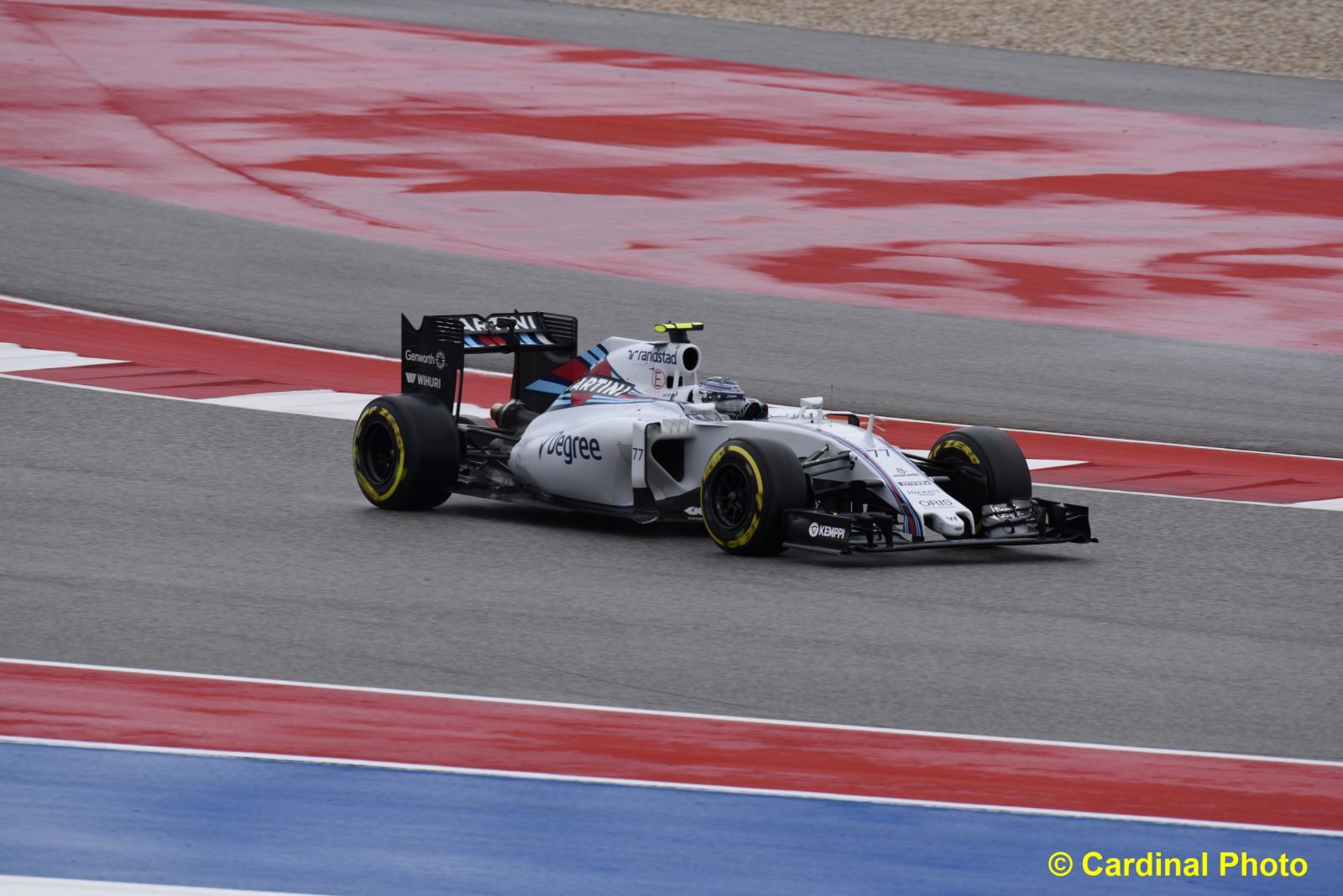
but poor weather made that impossible.
Even when the cars were running, water in the air reduced apparent sharpness of the images.
The lenses focused quickly and worked well, though!
Nikon D810, Nikon 200-500mm f/5.6 lens @ 420mm, 1/750s @ f/8, ISO 560
Assuming that is true (all the articles are third party efforts, with no confirmation from Nikon or Canon, but with some lab test results to back them up), then f/2.8 “Pro” lenses focus faster strictly because they have better focus motors, and perhaps because they have sharper images (that part is only my speculation). This matters a lot if you are buying a big, heavy, expensive lens simply because you assume that its wider-aperture lets it focus faster. Instead, you’ll need to base your comparison on measured AF speed – which is more related to the AF motor used. So it is not impossible for a modern-design lens like the Nikon 200-500mm f/5.6 to focus as fast or faster than its f/4 cousin.
This is really good news for photographers who don’t need those extra f-Stops for super-low light or DOF isolation. You can save massive amounts of weight and money by dropping down even 1 stop. The Nikon 200-500mm f/5.6, for example, is $1350 and 4.6 pounds, compared to the Nikon 200-400mm f/4 lens, which is $7,000 and 7.4 pounds. You do lose focusing light with the Sigma 150-600 as you get to the long end, as it is f/6.3 out there – although only 1/2-stop, compared to the 2-3 stops you might have thought you were missing out on.
This re-thinking of the physics and optics of how AF phase-detect sensors work is pretty new to me, so I welcome comments or emails from anyone with hard data that either confirms or conflicts with the argument!
Which lens is right for you?
As you can tell from reading this review, I would be happy to shoot with any of these lenses, but for different reasons. If size and weight are not an issue, the Sigma 150-600mm Sport lens is the image quality winner by a nose. If you’d like to stick with Nikon, save a few bucks and some weight, the Nikon 200-500mm f/5.6 lens is a value-priced, well-built, alternative. And if you really want 600mm of reach but are hoping to keep your budget and backpack manageable, the Sigma 150-600mm Contemporary or the Tamron 150-600mm lens are excellent and relatively inexpensive options. You really can’t go wrong with any of these four lenses, given their relatively low price points compared to full-on “pro” lenses in this category like the Nikon 200-400mm f/4 lens, or the even more expensive Canon 200-400mm f/4 lens.
- Log in to post comments



